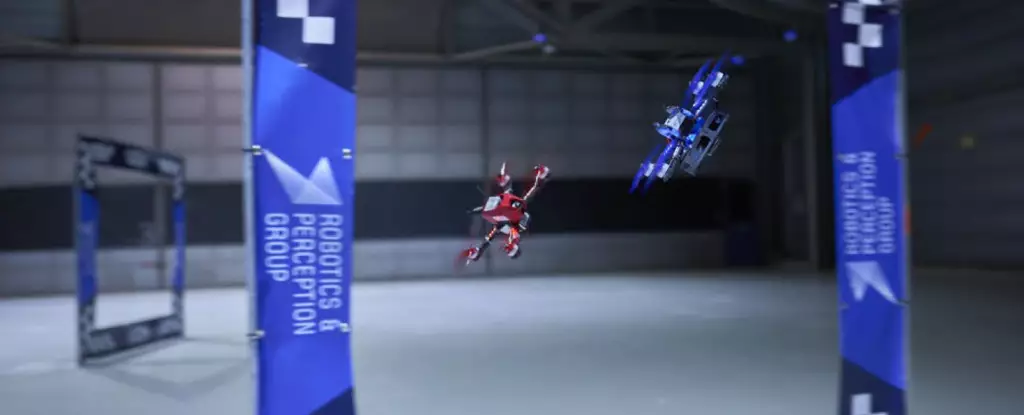The field of artificial intelligence (AI) continues to astound the world with its rapid advancements. In recent developments, an AI-controlled drone system called Swift has managed to outmaneuver and defeat three professional drone pilots in a series of head-to-head races. This remarkable feat showcases the potential of AI in drone racing and raises interesting questions about the capabilities of autonomous systems compared to human skills.
Designed by Elia Kaufmann, a robotics engineer at the University of Zurich, in collaboration with researchers at Intel Labs, Swift combines AI-learning algorithms with advanced onboard sensors. Unlike previous autonomous racing drones that relied on external motion cameras, Swift is equipped with a single camera and onboard sensors to detect its surroundings and track its own movement. This design allows Swift to fly at its physical limits while estimating its speed and location exclusively from its internal sensors.
Swift’s performance in the head-to-head races against professional drone pilots was impressive. Out of the 25 races, Swift won 15 times, surpassing the human competitors. Even though it lost 40 percent of the races, Swift consistently beat each human pilot multiple times and achieved the fastest recorded race time, surpassing the best human performance by half a second. According to Kaufmann and his colleagues, Swift demonstrated the highest average speed, found the shortest racing line, and managed to push the drone closer to its limits throughout the race.
Swift’s success can be attributed to the utilization of AI algorithms, specifically deep reinforcement learning. Unlike traditional algorithms, deep reinforcement learning allows the system to learn through trial and error during training. By applying its learned controls to real-world vision in turbulent conditions, Swift’s neural network continuously refines its strategy. The initial training process involved simulating the race track and exploring various routes through the gates to find the fastest paths. Once the control commands were optimized, Swift underwent a few test runs where it processed visual inputs in real-time.
While Swift’s achievements are groundbreaking, there are still areas that require further development before autonomous drones can fully take on unpredictable outdoor arenas. Guido de Croon, a robotics researcher at Delft University of Technology, believes that drones will eventually surpass human pilots under challenging conditions. Drones have the advantage of acquiring sensing information much more rapidly than humans, who rely on delayed images. With advancements in AI and sensor technology, autonomous drones will undoubtedly excel in difficult conditions as well.
The successes of Swift, the AI-controlled drone system, in defeating professional human pilots in drone races are a testament to the rapid advancements and capabilities of artificial intelligence. Swift’s ability to outmaneuver its human counterparts, achieve faster race times, and maintain precision throughout the races showcases the potential of AI in the field of drone racing. As technology continues to evolve, it is inevitable that autonomous drones will play a larger role in competitive drone racing, pushing the boundaries of what is possible in this thrilling sport.


Leave a Reply